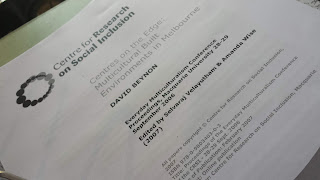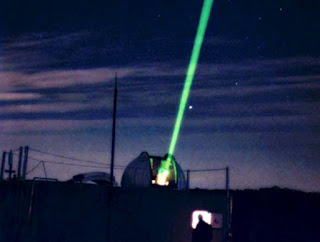REVIEW: Beynon, D., (2007) ‘Centres on the Edge: Multicultural Built Environments in Melbourne’, Everyday multiculturalism conference proceedings, Maquarie University, Sydney.
REVIEW:
Beynon, D., (2007) ‘Centres on the Edge: Multicultural Built Environments in Melbourne’, Everyday multiculturalism conference proceedings, Maquarie University, Sydney.
Beynon has one of those writing styles that makes us think twice about every sentence, and have a look back at where information may have been missed by us as readers. I must also say here that I have a personal relationship with Beynon, who was one of my most repeated lecturers during both my Bachelor, and my Masters, and now; 8 years later, is an Associate Supervisor of my PhD. So I have a bias.
This article is, in all esteem a direct look at Greater Dandenong and the incumbent cultural alteration of the urban fabric. Nominating the lower socio-economic environment prevalent in the City as a reason for the largesse of the migrant culture and, as such, the subsequent architectural form.
The Proceedings cover the relaxing of town planning regulations that allow for the building of religious structures, and nominates the difference in both the planning and materiality of the ecclesiastic structures per the agenda of bespoke nationality agendas.
The article covers the implication of acceptance in regards to low commercial edifice, and is suggestive of the inability of migrants to affect institutional and government edifice with what he calls (again) ‘third world looking’ structures (Beynon: 2007, Hage: 2000).
Whilst the proceedings give a good overview of the situation of urban fabric and migrant architectural impositions in Greater Dandenong, including a good, if brief, case study of a Buddhist Temple, we are left wondering at some of the brevity prevalent in the publication. There seems to be a concise description of what is, and we are not indulged with the societal implications. Other than; these are “co-options” of Australian “Anglo-Celtic’ society.
This diverse cultural expression upon the Australian vernacular norm, including cultural importation of international religious building vernacular, partially altered; touches not on established societal reaction, other than to suggest that acceptance is marginalized to culturally diverse regions (their own locality) and has no current critique within the greater Australian culture. i.e. the buildings don’t affect Australia immediately due to site, and as such ‘suffer’ (albeit their relativley left alone) to ‘out of sight, out of mind.’
Beynon suggests that the scope of the whole construction, and, each unique built structure represents a case for further study. This is, a research into the ‘monumental’ and there is no suggestion of the alteration of the actual living environments of the home. Perhaps there is also scope then to look into where the appropriation (though forced) of residential architecture, represents altered uses, not to substantiate place through religious embodiment, but through daily life use and how accepts migrant intervention.
What becomes apparent in the language of migration and architecture is the presumption that ‘British Australians’ or, as nominated here ‘Anglo-Celtic’ Australians suffer an innate racism that, whether they see it in themselves or not; is articulated as temperate allowance of the ‘orient exotic’ provided it does not interfere with their regular life.
The unspoken suggestion is that; established white Australians force migrants to the edge of the established urban form – and society – because of some real, or imagined loyalty to the United Kingdom, as progenitor of Christian Australian Culture.
Of course, this goes against ABS data of victorian religions that suggests that Catholicism out-strips the Church of England as the Primary Religion, so that in the very essence of Anglo Celtic culture, the state religion of England (and Australia) is under represented in comparison to ‘migrant religions.’
It also ignores the bulk of Asian-Christians, and notably, unavoidably: That It is not the actual responsibility of established Australians to alter their own traditions, the evidence suggests that they are more than welcoming to new cultures. Or the fact of the matter is that this discussion would not occur.
It would be prevalent then, for someone like Beynon to substantiate the claims of white blaze attitudes or rejection, by discussing where The City of Melbourne has refused the construction of Migrant dwellings, religious edifice, schools, institutions, and politically ostracised them for being immigrants.
It is difficult to accept that, where land has been zoned for a specific use (residential) the council that allows for a series of architecturally divergent constructions has been allowed, where land was not already built on – being rural, or similar – the full picture of migrant inclusion needs to be explored not where the institutions are evidently different, but are enmeshed within the existing urban form.
There are a wealth of examples where Australians have on their doorsteps, within inner city Melbourne, a wealth of diverse cultures and appropriated architectural typologies, including the building and extension of religious structures to serve various faiths. Which is evidently totally accepted by “Anglo-Celtic-Australia”
Who obviously don’t prevent the alteration of the built form and urban fabric, indeed they appear happy to allow the ship of migrant inclusion to steer itself, and there appears to be no suggestion of “societal assimilation.”
Or there would be easy, many examples, within the last decade of both architectural and social disclusion, other than reference to an international media hype regarding Muslims, and the islamification of the suburbs.
If, indeed, a media driven global western worlds reaction to Muslim social norms was an adequate representation of the way ‘British-Australia’ thought of migrants, or, itself.
Beynon, D., (2007) ‘Centres on the Edge: Multicultural Built Environments in Melbourne’, Everyday multiculturalism conference proceedings, Maquarie University, Sydney.
Beynon has one of those writing styles that makes us think twice about every sentence, and have a look back at where information may have been missed by us as readers. I must also say here that I have a personal relationship with Beynon, who was one of my most repeated lecturers during both my Bachelor, and my Masters, and now; 8 years later, is an Associate Supervisor of my PhD. So I have a bias.
This article is, in all esteem a direct look at Greater Dandenong and the incumbent cultural alteration of the urban fabric. Nominating the lower socio-economic environment prevalent in the City as a reason for the largesse of the migrant culture and, as such, the subsequent architectural form.
The Proceedings cover the relaxing of town planning regulations that allow for the building of religious structures, and nominates the difference in both the planning and materiality of the ecclesiastic structures per the agenda of bespoke nationality agendas.
The article covers the implication of acceptance in regards to low commercial edifice, and is suggestive of the inability of migrants to affect institutional and government edifice with what he calls (again) ‘third world looking’ structures (Beynon: 2007, Hage: 2000).
Whilst the proceedings give a good overview of the situation of urban fabric and migrant architectural impositions in Greater Dandenong, including a good, if brief, case study of a Buddhist Temple, we are left wondering at some of the brevity prevalent in the publication. There seems to be a concise description of what is, and we are not indulged with the societal implications. Other than; these are “co-options” of Australian “Anglo-Celtic’ society.
This diverse cultural expression upon the Australian vernacular norm, including cultural importation of international religious building vernacular, partially altered; touches not on established societal reaction, other than to suggest that acceptance is marginalized to culturally diverse regions (their own locality) and has no current critique within the greater Australian culture. i.e. the buildings don’t affect Australia immediately due to site, and as such ‘suffer’ (albeit their relativley left alone) to ‘out of sight, out of mind.’
Beynon suggests that the scope of the whole construction, and, each unique built structure represents a case for further study. This is, a research into the ‘monumental’ and there is no suggestion of the alteration of the actual living environments of the home. Perhaps there is also scope then to look into where the appropriation (though forced) of residential architecture, represents altered uses, not to substantiate place through religious embodiment, but through daily life use and how accepts migrant intervention.
What becomes apparent in the language of migration and architecture is the presumption that ‘British Australians’ or, as nominated here ‘Anglo-Celtic’ Australians suffer an innate racism that, whether they see it in themselves or not; is articulated as temperate allowance of the ‘orient exotic’ provided it does not interfere with their regular life.
The unspoken suggestion is that; established white Australians force migrants to the edge of the established urban form – and society – because of some real, or imagined loyalty to the United Kingdom, as progenitor of Christian Australian Culture.
Of course, this goes against ABS data of victorian religions that suggests that Catholicism out-strips the Church of England as the Primary Religion, so that in the very essence of Anglo Celtic culture, the state religion of England (and Australia) is under represented in comparison to ‘migrant religions.’
It also ignores the bulk of Asian-Christians, and notably, unavoidably: That It is not the actual responsibility of established Australians to alter their own traditions, the evidence suggests that they are more than welcoming to new cultures. Or the fact of the matter is that this discussion would not occur.
It would be prevalent then, for someone like Beynon to substantiate the claims of white blaze attitudes or rejection, by discussing where The City of Melbourne has refused the construction of Migrant dwellings, religious edifice, schools, institutions, and politically ostracised them for being immigrants.
It is difficult to accept that, where land has been zoned for a specific use (residential) the council that allows for a series of architecturally divergent constructions has been allowed, where land was not already built on – being rural, or similar – the full picture of migrant inclusion needs to be explored not where the institutions are evidently different, but are enmeshed within the existing urban form.
There are a wealth of examples where Australians have on their doorsteps, within inner city Melbourne, a wealth of diverse cultures and appropriated architectural typologies, including the building and extension of religious structures to serve various faiths. Which is evidently totally accepted by “Anglo-Celtic-Australia”
Who obviously don’t prevent the alteration of the built form and urban fabric, indeed they appear happy to allow the ship of migrant inclusion to steer itself, and there appears to be no suggestion of “societal assimilation.”
Or there would be easy, many examples, within the last decade of both architectural and social disclusion, other than reference to an international media hype regarding Muslims, and the islamification of the suburbs.
If, indeed, a media driven global western worlds reaction to Muslim social norms was an adequate representation of the way ‘British-Australia’ thought of migrants, or, itself.
Review by: Thomas J. Barker, Arch.Angle.Studios
Melbourne, Victoria, Australia.
Discover More:







Comments
Post a Comment